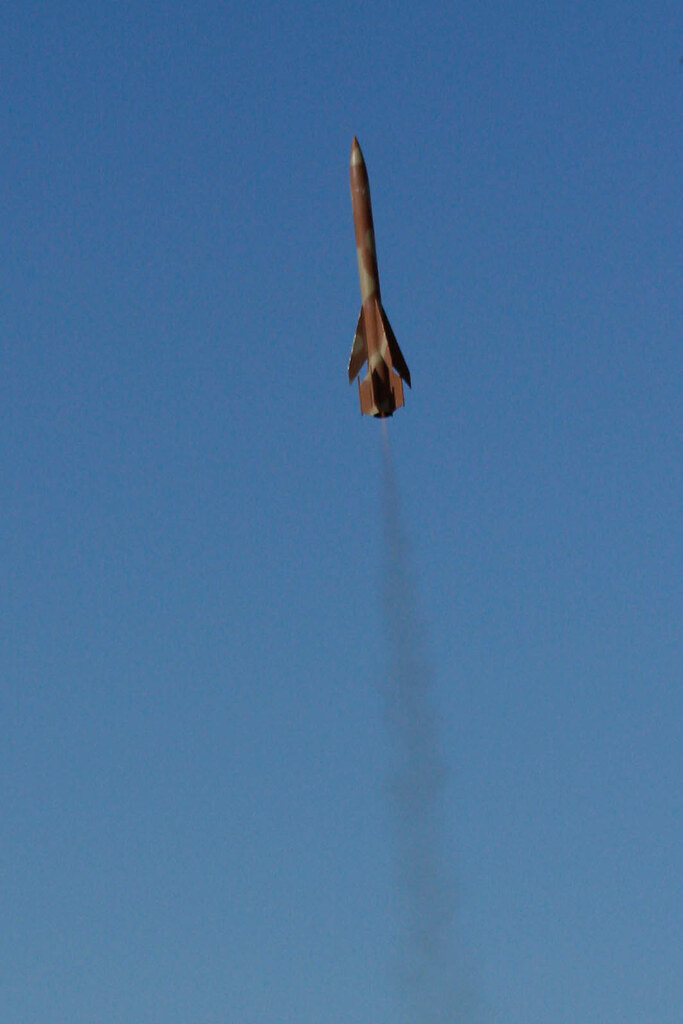I picked up a TLP HARM kit a while back and am just getting around to building it. I would like to find where CG/CP needs to be for this kit, or to otherwise be enlightened on how to determine this. I'm not experienced with either RocSim or OpenRocket - I've found a couple of HARM RocSim files, but they indicate that they were scratch-built, so I have no idea how the materials chosen for those might compare to the TLP kit.
Starting from scratch in OpenRocket seems difficult, because I have no idea as to the parts that TLP uses for this kit, especially when it comes to the nose cone.
I'm probably over-complicating this, but I want this one to fly true; I plan on putting a lot of time into the finish and don't want a crack-up if I ever should fly it (it would seem a shame not to).
The commercially available decals seem really good, but I may try making my own to more accurately reflect the real thing - maybe a mix of the two. Also going to shoot for some more realistic leading edge fin treatments, and at some point, it would be neat to replace the TLP nose cone to more accurately reflect the 88's ogive, too, but I doubt I'd be able to find one.
I spent a lot of years on the actual HARM program, so I've got a soft spot in my heart for this bird (traveled the globe supporting the thing - at one point touched/tested every one in the Air Force inventory, so I pretty much know every bolt, hatch, and designation used on the airframe, including CG - would that point translate to a scale model?).
Either way, this is a gorgeous kit. I'm probably not being realistic as to my building skills versus the vision I've got in my head, but I'd be ecstatic if mine turned out nearly as beautifully as the ones sodmeister, rifleshooter, and others who have posted their builds on here have done.
As far as flying, the Aerotech E15-4 should be adequate as long as I don't deviate from plan too much (e.g. nylon chute & nomex wadding), correct?
Thanks for any input you all might be able to share!
Starting from scratch in OpenRocket seems difficult, because I have no idea as to the parts that TLP uses for this kit, especially when it comes to the nose cone.
I'm probably over-complicating this, but I want this one to fly true; I plan on putting a lot of time into the finish and don't want a crack-up if I ever should fly it (it would seem a shame not to).
The commercially available decals seem really good, but I may try making my own to more accurately reflect the real thing - maybe a mix of the two. Also going to shoot for some more realistic leading edge fin treatments, and at some point, it would be neat to replace the TLP nose cone to more accurately reflect the 88's ogive, too, but I doubt I'd be able to find one.
I spent a lot of years on the actual HARM program, so I've got a soft spot in my heart for this bird (traveled the globe supporting the thing - at one point touched/tested every one in the Air Force inventory, so I pretty much know every bolt, hatch, and designation used on the airframe, including CG - would that point translate to a scale model?).
Either way, this is a gorgeous kit. I'm probably not being realistic as to my building skills versus the vision I've got in my head, but I'd be ecstatic if mine turned out nearly as beautifully as the ones sodmeister, rifleshooter, and others who have posted their builds on here have done.
As far as flying, the Aerotech E15-4 should be adequate as long as I don't deviate from plan too much (e.g. nylon chute & nomex wadding), correct?
Thanks for any input you all might be able to share!






 I was able to flatten the sheet to make it usable. I have the TLP AGM-88 on que as a future build, and will watch this post to see what happens.
I was able to flatten the sheet to make it usable. I have the TLP AGM-88 on que as a future build, and will watch this post to see what happens.